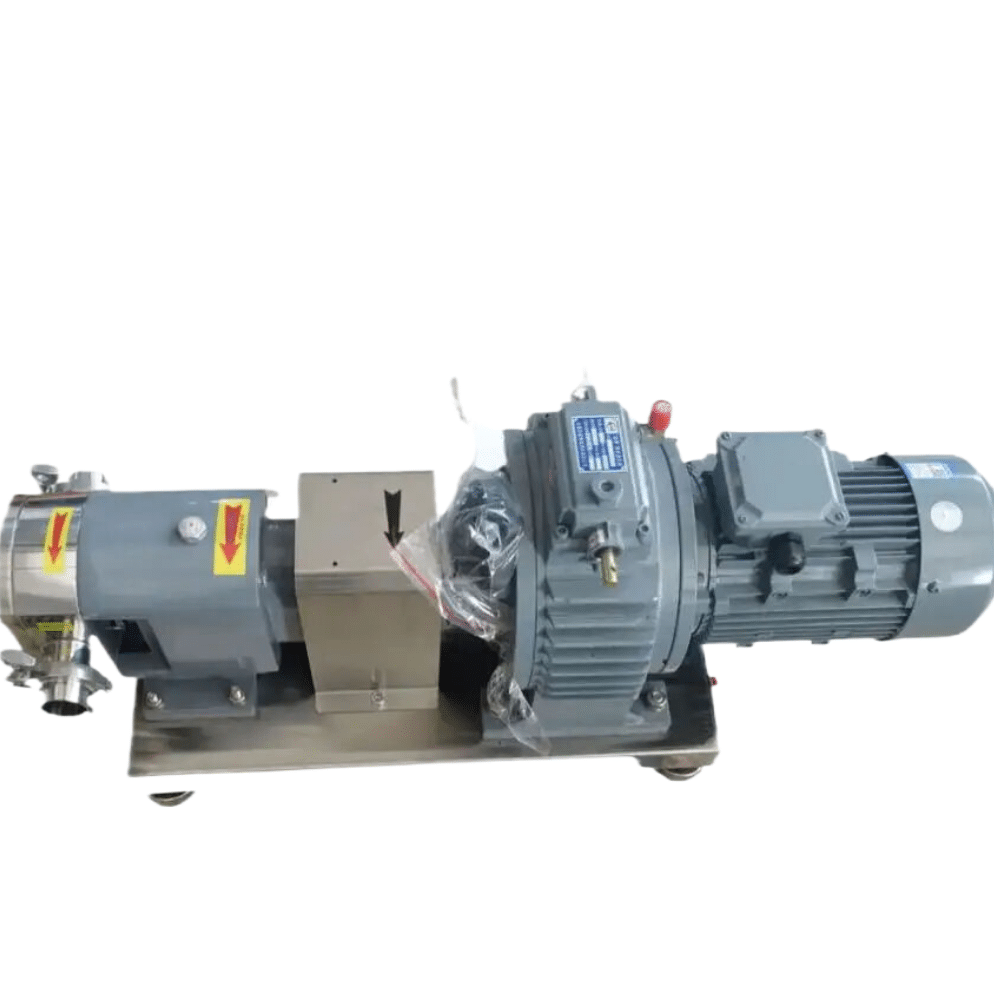The Versatility and Mechanics of the Lobe Pump

Strong 8k brings an ultra-HD IPTV experience to your living room and your pocket.
Lobe pumps occupy a unique niche in fluid handling technology, serving industries that range from food production and pharmaceuticals to wastewater treatment and petrochemicals. A lobe pump is a positive displacement pump, meaning it moves fluid by repeatedly enclosing a fixed volume and then displacing it into the discharge piping. This fundamental mechanism imbues the lobe pump with distinct advantages: gentle handling of sensitive fluids, wide flow ranges, and high hygienic standards. In this article, we’ll explore the technology behind lobe pumps, highlight their applications, examine design considerations, and offer guidance for maintenance and selection.
Understanding the Core Principle
At the heart of the lobe pump is a pair of synchronized rotors—often configured as lobed shapes—housed within a casing that carries inbound fluid in the cavities formed between lobes. As the rotors rotate, they trap fluid and convey it around the chamber, eventually delivering it to the outlet. Crucially, the rotors do not make contact; they are timed with precision via external gears. This non-contact design ensures minimal wear and enables the pump to handle highly viscous, particulate-laden, or shear-sensitive fluids.
Unlike centrifugal pumps, which impart energy to fluid via velocity change, lobe pumps deliver fluid in discrete volumes per rotation. This positive displacement action allows them to generate high pressure at relatively low speeds, and maintain consistent, metered flow irrespective of downstream pressure variations—an attribute highly valued in dosing and transfer operations.
Industrial Applications and Benefit
Lobe pumps find favor in many industries due to their adaptability and performance. In the food and beverage sector, for instance, lobe pumps are a staple in the transfer of syrups, dairy products, sauces, and fruit concentrates. Their ability to handle delicate fluids without damaging texture or structure—thanks to low shear and gentle handling—makes them ideal for yogurt, cheese curd, and pasteurized milk.
Pharmaceutical manufacturers also favor lobe pumps, especially in aseptic processing. These pumps can be cleaned via CIP (clean-in-place) protocols, and their hygienically designed housings prevent contamination. Whether it's transferring vaccine components or pharmaceutical gels, the sanitary attributes of lobe pumps ensure both safety and regulatory compliance.
In wastewater treatment and sludge processing, robust lobe pumps excel at moving thick slurries loaded with solids, grit, and debris. Their ability to pass particles with minimal clogging and operate under abrasive conditions makes them well-suited to sewage lift stations and digesters. Meanwhile, chemical and petrochemical industries utilize lobe pumps for their ability to handle corrosive fluids, adhesives, polymers, and even crude oil derivatives, benefiting from their gentle yet powerful displacement action.
Lobe Pump Designs and Configurations
The effectiveness of a lobe pump depends heavily on its design details. Standard lobe types include two-lobe, three-lobe, and four-lobe configurations. Two-lobe pumps offer high flow capacities but can exhibit pulsing flow. A three-lobe design smooths this pulsation, while a four-lobe pump further reduces flow ripple, delivering consistent, quiet performance. The ideal choice depends on whether flow smoothness, capacity, or overall pump size is most critical to the application.
Rotor materials also vary significantly. Common options include food-grade stainless steel, ductile iron, and hardened alloys designed to resist corrosion and wear. Some rotors are coated or lined to enhance resistance to acidic or abrasive fluids. Mechanical seals come in multiple flavors: single, double, and cartridge-style seals, often utilizing ceramic, silicon carbide, or tungsten carbide faces to withstand high-pressure applications.
Mounting and casing designs further influence pump selection. Centersline-mounted pumps align inlet and outlet ports for stable suction and discharge, enhancing performance in pressurized systems. Non-centersline mounting may reduce footprint, valuable in compact installations. The use of close-coupled versus baseplate-mounted pumps depends on whether a separate driver is necessary or an integrated motor pump suits the plant layout.
Flow Correction and Efficiency
Efficiency in a lobe pump—typically measured by volumetric and overall efficiency—relies on minimizing internal leakage and operating within design pressures. Proper clearances between lobes and the casing are critical; too much clearance invites slippage, reducing output and efficiency, while too little increases friction and wear.
Flow pulsation is another consideration. Since a lobe pump creates flow in discrete packets with each rotation, slight pressure oscillations can ripple into the downstream piping. For many processes, these variations are negligible; but in precise metering systems, pulsation dampeners or accumulator vessels may be employed to even out delivery.
Maintenance of efficiency often translates to routine inspections—monitoring rotor/casing clearances, checking seal integrity, and replacing bearings before they wear to prevent misalignment. Because the rotors don’t come into contact, a worn bearing can lead to uneven gaps and internal leakage fast. Periodic seal replacement is also vital; an early—or better, predictive—change can prevent cross-contamination in sanitary applications or leakage in hazardous environments.
Customization and Integration
One of the lobe pump’s strengths is its flexibility. Many pump manufacturers offer customized units tailored to specific industries. Pharmaceutical lines often feature electropolished surfaces, tri-clamp clamps, and steam-sterilizable packaging. Food-grade pumps may arrive with white-coated casings, polished interior surfaces, and certifications like 3-A or EHEDG. Engineering teams can select rotor shapes—oval, tri-lobe, quad-lobe, or asymmetrical—for flow control, pulsation mitigation, and material compatibility.
Integration considerations include drive options—electric motors, hydraulic drives, or even engine-coupled drives for remote locations. Variable frequency drives (VFDs) are frequently fitted to control pump speed, thereby adjusting flow rates. Automation demands may also require proximity switches, vibration sensors, and temperature monitoring at mechanical seals and bearings.
Key Factors for Selection
Choosing the right lobe pump starts with understanding the fluid to be moved. Is it a sanitary fluid like milk or juice? Does it contain solids? Is viscosity low, like water-like, or extremely high, like molasses? Once the fluid’s physical and chemical properties are cataloged, design engineers match it to a pump capacity, pressure head, speed range, and material compatibility.
Next comes the setting: will the pump run continuously, or intermittently? Continuous operations may benefit from direct-drive, base-mounted pumps with heavy-duty bearings; intermittent runs might leverage close-coupled designs. If the pump passes through vaccination-grade product, ease of disassembly and cleaning is paramount. If the fluid is abrasive or chemically aggressive, corrosion-resistant alloys and hardened components become necessary.
Flow consistency and pulsation control also factor in. For metering applications, a three- or four-lobe rotor combined with a pulsation dampener ensures smoother output. In batching applications, flow variation is often acceptable, so a simpler two-lobe rotor may suffice, reducing complexity and cost.
Care and Maintenance Practices
A lobe pump can deliver decades of reliable service—so long as maintenance is proactive and aligned with manufacturer recommendations. Daily visual inspections should note unusual vibrations, overheating at the seal area, or noise changes. Weekly lubrication of bearings and gearbox—if applicable—prevents wear and heat buildup. Monthly checks should include seal integrity, casing wear, and rotor clearance measurement.
When time comes for a rebuild, many operators prefer modular cartridge designs. Cartridges allow the pump to be pull-mounted from the housing, enabling quick swapping of seals, rotors, and thrust bearings. This design dramatically reduces downtime in sanitary plants where CIP cleaning and sterilization cycles must resume promptly.
Between in-depth rebuilds, operators may refresh the pump by honing or lapping the rotor-casing interface to restore close tolerances. This ensures volumetric efficiency returns to factory specification. In cases of corrosion or abrasion, sometimes resizing the lobe or modifying the rotor profile is possible with aftermarket support—an option worth considering when OEM components are unavailable.
Environmental and Safety Considerations
Lobe pumps often transfer aggressive chemicals or hazardous media, so adherence to safety standards is essential. Explosion-proof versions of lobe pumps, encased in sealed conduits with flameproof motors, can handle flammable solvents or gases. Proper ventilation and grounding must be installed, especially when volatile fluids are transferred.
From an environmental perspective, the gentle pumping action minimizes aerosolization—important when handling solvents or toxic fluids. Leak detection systems around seals and collection trays beneath pumps catch unexpected discharge, reducing environmental exposure. Operators using hazardous chemicals should implement regular seal leak checks, and maintain a log of seal replacements to ensure continued compliance with discharge regulations.
The Future of Lobe Pumping
Emerging trends point toward further automation and enhanced materials. Smart sensors integrated into housings enable real-time monitoring of wear and performance, alerting operators to impending failure before it happens. Advances in polymer science may produce rotor coatings that resist fouling or biofilm formation—critical in biopharma applications.
Additive manufacturing, or 3D printing, offers potential for rapid, bespoke rotor manufacture. Custom rotor profiles tailored to highly specialized fluids—like cell cultures or microbe-laden media—could be produced quickly without traditional machining. These rotors can serve niche applications while maintaining hygienic finishes critical in biotech or food industries.
Digital twins and simulation software allow engineers to analyze flow patterns inside a lobe pump virtually, adjusting rotor geometry to optimize performance under specific shear and viscosity constraints. These predictive models reduce prototyping time and enhance efficiency before physical manufacture begins.
Final Thoughts: A Pump for All Seasons
The lobe pump stands as a testament to mechanical ingenuity and practical flexibility. Its robust yet gentle operation has rendered it indispensable in fields as diverse as craft brewery, space-age pharmaceuticals, heavy-duty pumping stations, and delicate polymer coating lines. Its modularity and cleanability make it uniquely suited to sanitary industries, while its ability to handle sludges and viscous fluids endears it to environmental and chemical sectors.
A lobe pump—when carefully chosen and well-maintained—becomes more than a piece of equipment. It becomes a silent workhorse in production; a conveyor of culture media in a hospital; a guardian against contamination; and a solution to tough pumping challenges. Its blend of simplicity and sophistication continues to inspire engineers to push design boundaries, integrating sensors, exotic materials, and data-driven controls.
In an era increasingly focused on efficiency, safety, and regulatory compliance, the lobe pump remains an engineering mainstay. Whether you require drip-free dosing of a fine gel or the reliable movement of heavy sludge, this versatile pump answers the call. By understanding its strengths—flow control, low shear, hygienic processing—and designing systems around its capabilities, you’ll unlock performance that no centrifugal alternative can match. When handled with care, a lobe pump can deliver decades of dependable service, ensuring that fluid transfer needs are met precisely, cleanly, and continually.
Note: IndiBlogHub features both user-submitted and editorial content. We do not verify third-party contributions. Read our Disclaimer and Privacy Policyfor details.







